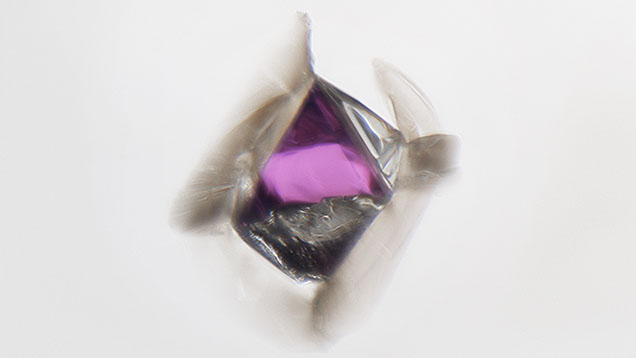Xenomorphic Garnet in Diamond

Garnet is a nesosilicate mineral belonging to the cubic crystal system. The crystal habit most commonly assumed by this mineral is a dodecahedron. A garnet crystal with rare octahedral morphology was recently encountered in the form of a xenomorphic inclusion within diamond. Xenomorphism is the process by which a growing mineral forces a syngenetic mineral inclusion to adopt a crystal habit familiar to the host (J.I. Koivula, The MicroWorld of Diamonds, Gemworld International, Northbrook, Illinois, 2000). Xenomorphic crystals may also be referred to as “anhedral” since they lack their own characteristic crystal shape in favor of the host’s. However, it should be noted that not all anhedral included mineral crystals are xenomorphic. As an octahedron is the most common diamond habit, the garnet inclusion grew into this form, complete with triangular growth marks visible on one of the octahedral faces (see above). Xenomorphism in diamond can also occur with mineral inclusions that do not belong to the cubic crystal system, and these can be forced into other diamond habits. For example, a monoclinic crystal of diopside may be forced into a cuboctahedral habit. Xenomorphic crystals are just one of many unique inclusion types possible within diamond.



